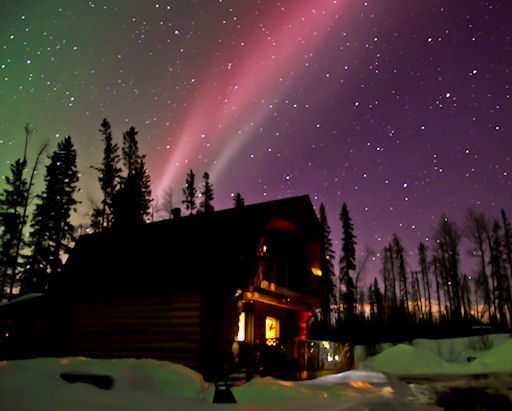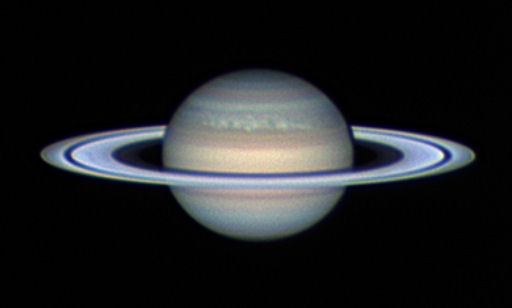Metallic photos of the sun by renowned photographer Greg Piepol bring together the best of art and science. Buy one or a whole set. They make a stellar gift. | | |
BRIGHT CME: NASA twin STEREO spacecraft observed a spectacular coronal mass ejection launched from the vicinity of decaying sunspot 1176 on April 3rd around 0500 UT. The blast was not Earth directed. Nevertheless, there is a slim chance that it deliver a glancing blow to Earth's magnetic field on or about April 6th. CME movies: STEREO-A, STEREO-B.
AURORA WATCH: A high-speed solar wind stream is buffeting Earth's magnetic field and stirring up auroras around the Arctic Circle. Steve Milner sends this exposure from Fort St. John, British Columbia, Canada:

"I took the picture just after midnight on April 2nd," says Milner. "To the naked eye, the display was pale, but a 20 second exposure with my Canon D7000 revealed a panoply of color."
High-latitude sky watchers should remain alert for auroras--even "pale" ones--as the solar wind continues to blow.
NEW: April 2011 Aurora Gallery
[previous Aprils: 2010, 2009, 2008, 2007, 2006, 2005, 2004, 2003, 2002]
SECRET SPACE PLANE FLARES: The US Air Force's X-37B space plane is circling Earth and, although it is on a classified mission with an officially unpublished orbit, sky watchers have spotted it. "I saw the X-37B from my home in Pasadena, California, around sunrise on March 31st," reports Anthony Cook of the Griffith Observatory. "The spacecraft's appearance was remarkable. When overhead it was a little brighter than a 2nd magnitude star with a slight yellow hue. Then it flared. As the X-37B moved toward the horizon it became silvery and brightened to around magnitude -6, far outshining Venus below it." The flare was presumably caused by sunlight glinting from some flat surface on the shuttle-shaped spacecraft, but no one can say for sure because it is a classified mission. Ready for a secret flare of your own? Space plane flyby preditions may be found on the Simple Satellite Tracker or on your cell phone.
SATURN'S RINGS SURGE IN BRIGHTNESS: This Sunday, April 3rd, Saturn will be "at opposition"--that is, opposite the sun in the skies of Earth. Whenever this happens, Saturn's rings surge in brightness. Why? Scroll down for the explanation; on the way, inspect this photo taken by Paul Haese of South Australia on March 30th:

"This is how Saturn looked through my 14-inch telescope," says Haese. "With opposition so close, the Seeliger effect is really starting to show itself. The rings are much more spectacular than in previous years."
The Seeliger effect, also known as the opposition effect, is what brightens the rings. Saturn's rings are made of frozen chunks ranging in size from dust to houses. Sunlight directly backscattered from those ice particles causes the ring system to shine even more than usual for a few days around opposition. The exact mechanism involves shadow-hiding and possibly coherent backscattering.
To find Saturn, go outside at midnight and look for a conspicuous yellow "star" in the constellation Virgo. Even a small telescope will show Saturn's brightening rings. [sky map]
more images: from Efrain Morales Rivera of Aguadilla, Puerto Rico; from Christopher Go of Cebu City, Philippines

